Curry w/ Calabaza Squash, Tofu, & Habaneros
I didn't go into this knowing that I was going to make calabaza curry. I was just perusing my friendly neighborhood fun ingredient grocery store! Maybe with vague idea that I was going to make curry... But not necessarily locked into this.
I tend to always start in the produce department, get lost in there, and then forget half my list before making it around to the juice isle and Gatorade that I always forget! Going in almost exclusively for Gatorade, I started there and did my route through the grocery store backwards.
Obviously I got Gatorade. Skipped through the frozen food isle because I don't eat that stuff. Drooled over all of the cheese, which I spent far too much time in!! And managed not to get anything crazy because I won't pay full price for cheese unless I know that I really, truly, actually need something. Didn't find anything for pet food in the meat section because I won't spend more than $0.99 a pound on dog chicken. Circled back around to the Latin American and Asian food departments. Picked up some coconut cream because I pretty much always need some! Had to wrap back around again to get tortillas because grocery stores make you run in circles. And then finally found the produce isle!
By the time that I reached the produce isle I was tired and already wanted to go home.
But I always get excited about the produce department! I grabbed some bean sprouts because they're difficult to find. I got some fresh turmeric and ginger. Picked up some guavas thinking that maybe that would be fun in the curry! And then I ended up at the squash section. And this ABSOLUTELY ENORMOUS thing caught my eye.
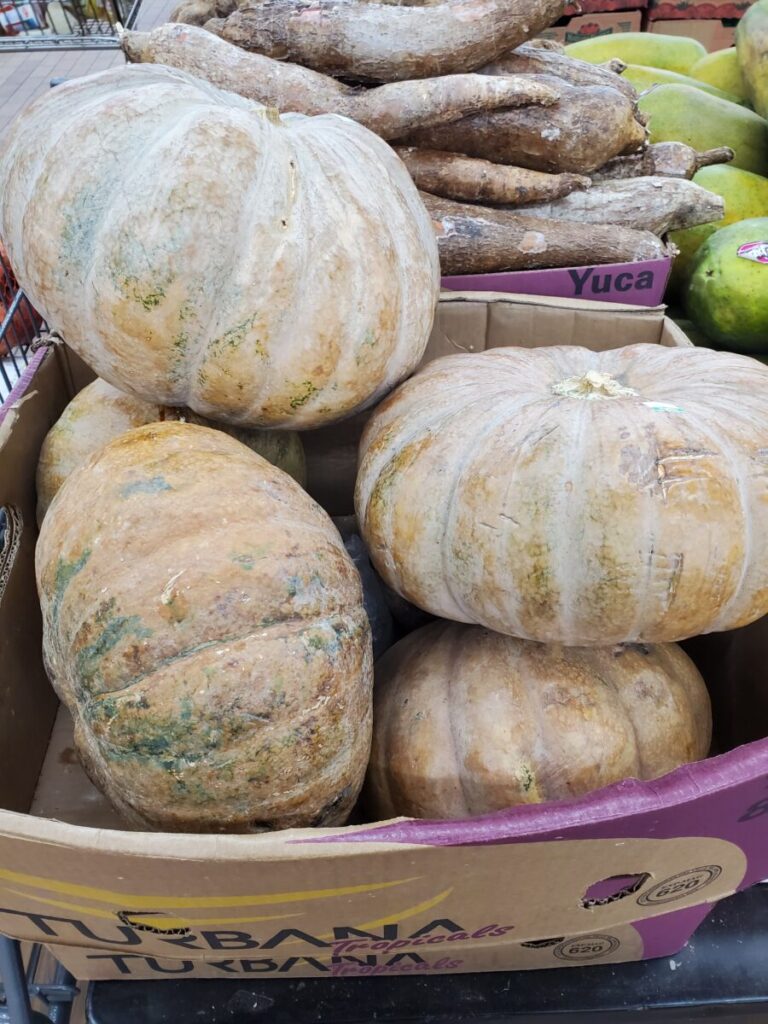
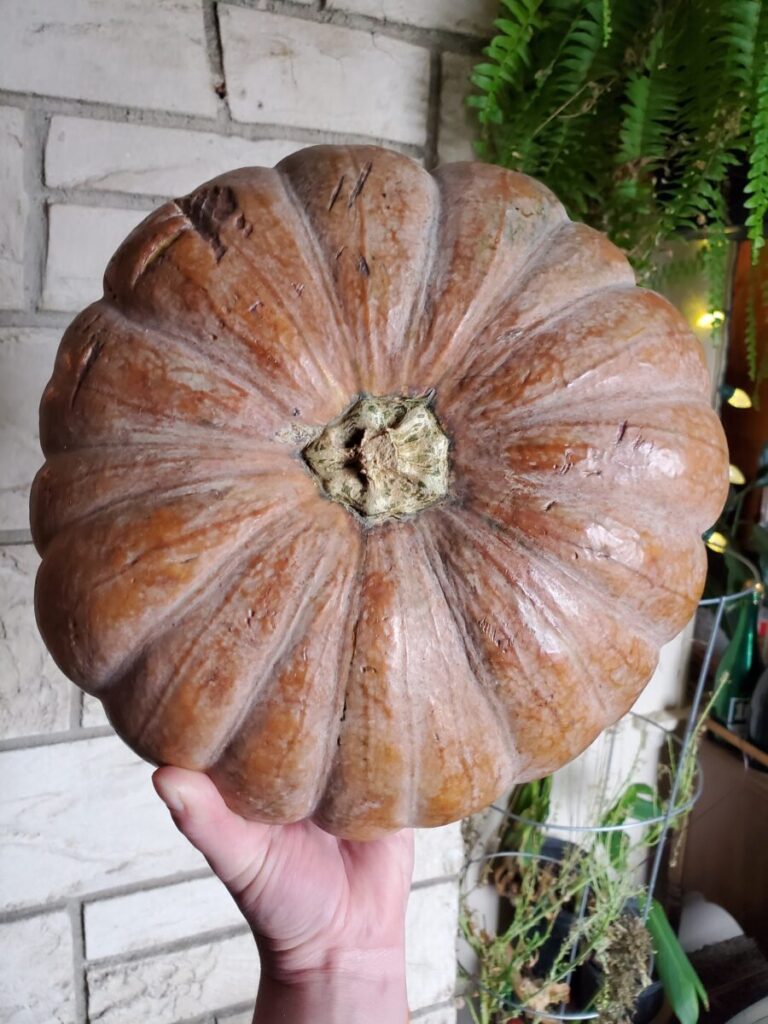
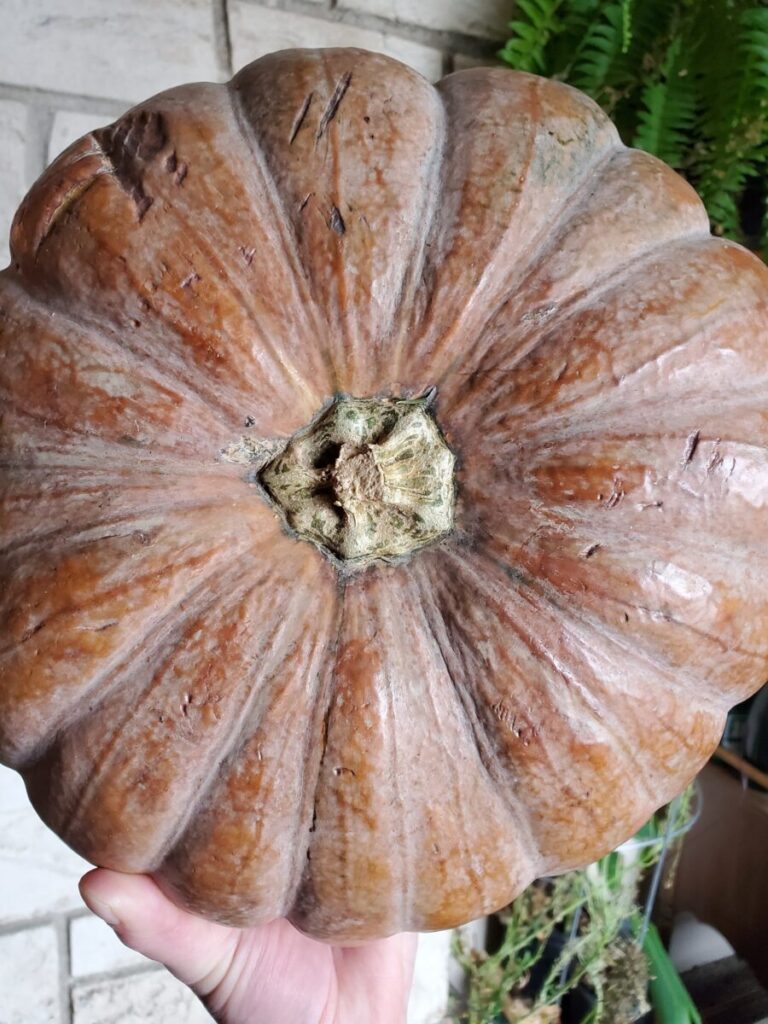
What IS a Calabaza?
I very distinctly remembered thinking, "I don't know what this is or what I'm going to do with it, but this thing is coming home with me!!"
I briefly Googled it in the grocery store, but "calabaza" is a generic Spanish term for "pumpkin" and isn't necessarily associated with a particular gourd. It looked vaguely like an enormous butternut squash/pie pumpkin hybrid.
It took some digging, but "calabaza" seems to represent several types of squash and pumpkin. The best that I can come up with is that it's sometimes referred to as a West Indian pumpkin. However, this too seems to be a relatively generic term. Particularly since a lot of the gourds that I find under this name are a much richer green, more like an enormous acorn squash! The one that I have looked a pale orangish green in the grocery. store under fluorescent lighting. But it's really quite a deep orange.
I can't even figure out whether to call it a squash or a pumpkin. I keep wanting to call it a squash. But since it's a Spanish word for pumpkin and often referred to as a West Indian pumpkin, then surely it's a pumpkin? Yet, so many people also call it a squash!
It doesn't help that lot of places use the terms interchangeably and some will call it a squash and a pumpkin in the very same sentence. There are also various other spellings ranging from "kalabasa" to "calabaza."
At Least Is Calabaza a Squash or a Pumpkin?
The best that I can come up with is an article from Devour.Asia's Is Kalabasa (Calabaza) a Pumpkin? They explain that squash is used in a lot of Southeastern Asian dishes. But that "squash" is called "kalabasa" in the Philipines. Whereas "kalabasa" is also referred to as "calabaza" in tropical America. Which really refers to "Cucurbita moschata" or "Cucurbita maxima." And that this is part of the Cucurbitaceae plant family of gourds that also includes melons, cucumbers, and loofah (yes, that vine in the cucumber family that hoity toity people buy in flea markets to clean toilets). But that it's more specifically the Cucurbita genus. Which is not to be confused with the Cucurbita pepo genus of actual pumpkins. Which are often used interchangeably for adapting recipes of varying cultures, anyway!
And I have entirely given up on the terminology portion of this segment.
In short, I believe that it is a squash. I am about 67% sure of this.


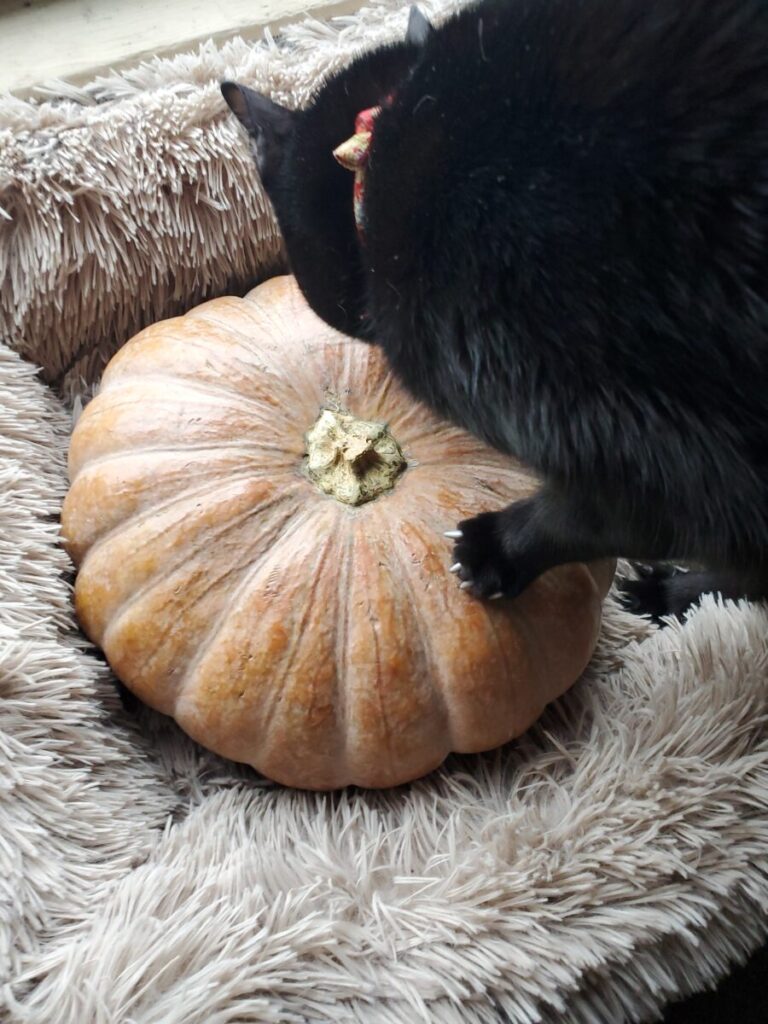
Can I Turn This Into Curry?
Whatever this thing may be, there does seem to be some consensus that it's supposed to have a rich, creamy consistency with a mild, nutty flavor. Something akin to a butternut or acorn squash.
Since this is what I was hoping for going into this, the flavor profile that I'm anticipating in calabaza curry should work out!
I also hadn't quite realized exactly how enormous it was until I got it home. This monstrosity cost almost $15! But is almost the size of my cat.
Nevertheless, there are also a plethora of calabaza curries. None of which I even bothered to look into after the name fiasco.
I had already gotten turmeric, had habaneros growing at home (yes, in January!), and was anticipating tofu and possibly brown rice noodles at this point. I don't tend to follow directions for curry. Anything savory and stew-like you can typically just keep adding things and slow cooking until it works out! So, here we are, winging calabaza curry!
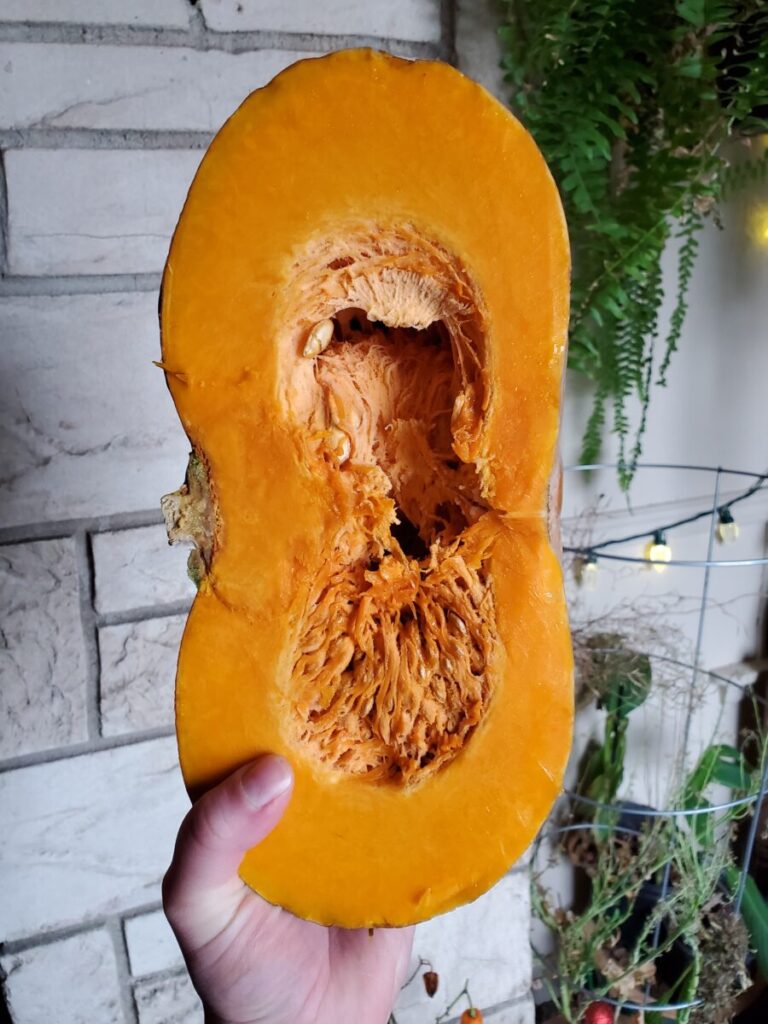
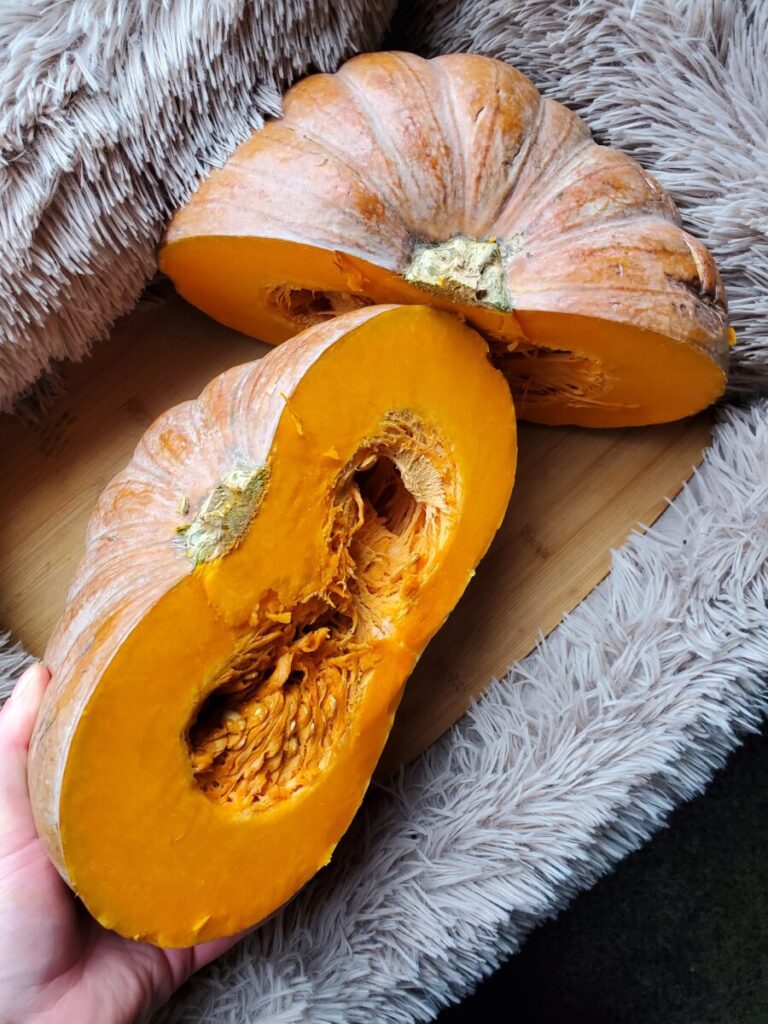
The Moment of Truth: Breaking Into the Calabaza
After all of this, I still wasn't quite sure what to expect when actually cutting into the calabaza! Mine looked far more orange than some of the others that I Googled down this rabbit hole and I wasn't sure that that would translate to thee flesh.
This was absolutely true, though! The calabaza was just as orange, actually far more orange, on the inside than on the outside. And it was quite reminiscent of a larger, squatter, oranger butternut squash.
It was so orange that I had a really difficult time taking pictures of it! Every time that my phone focused on the calabaza, everything else in the frame turned bright blue in comparison. I don't like altering my photos and my lights only exacerbated this problem! So, you're going to have to deal with it.
Gallery
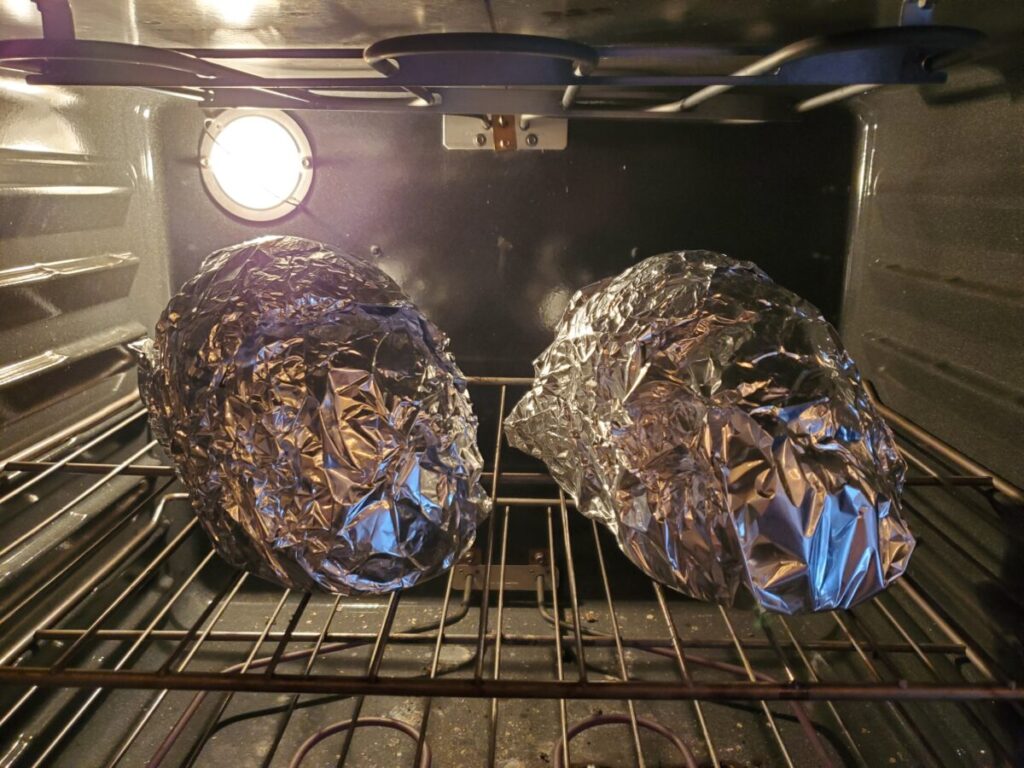
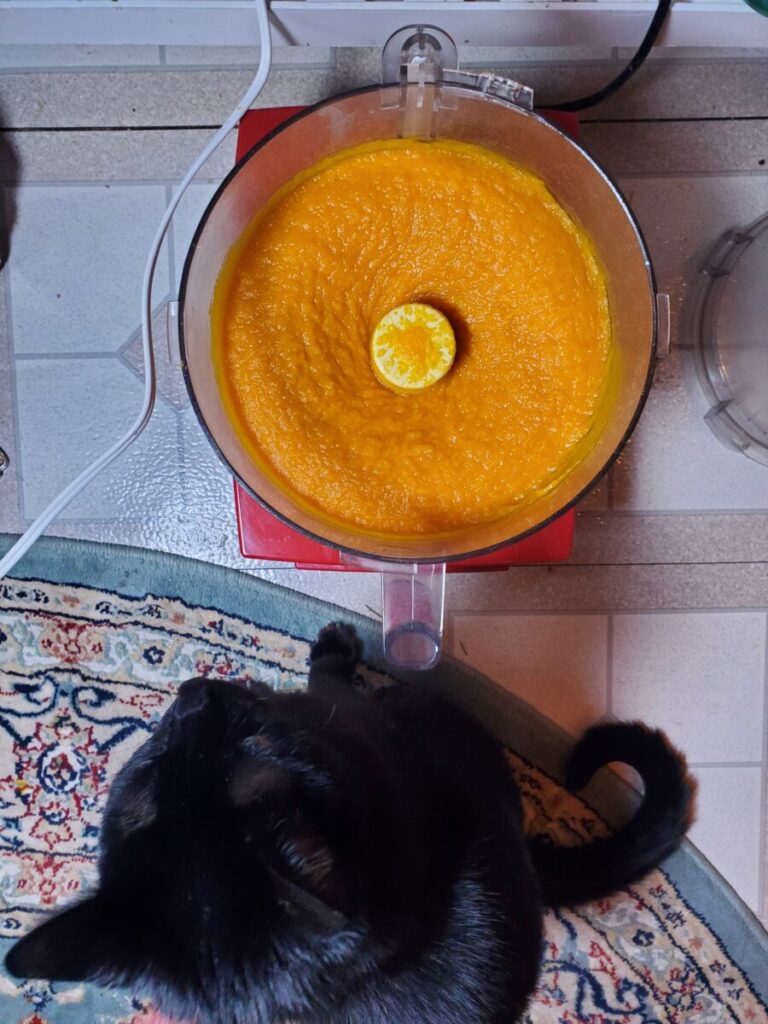
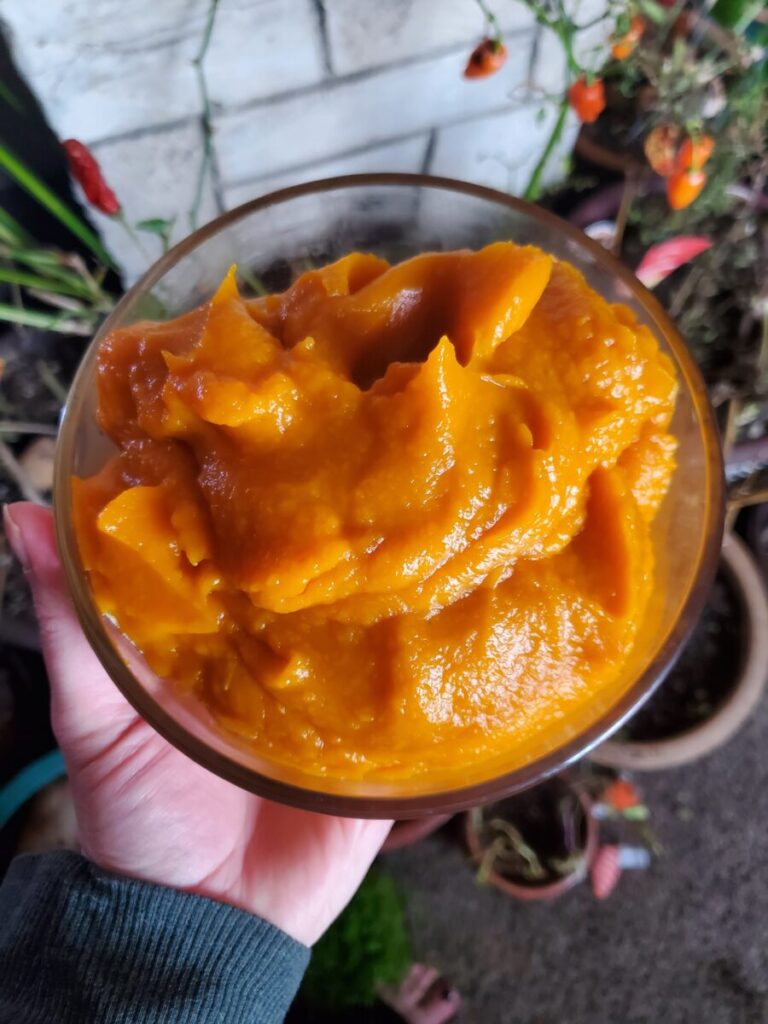
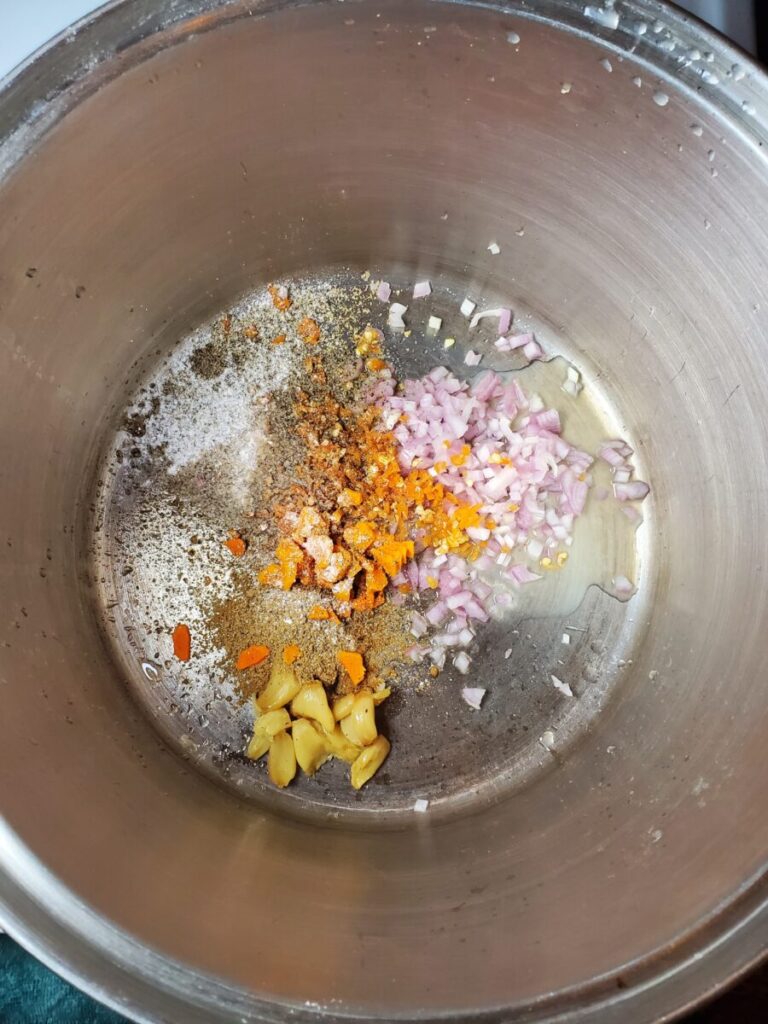
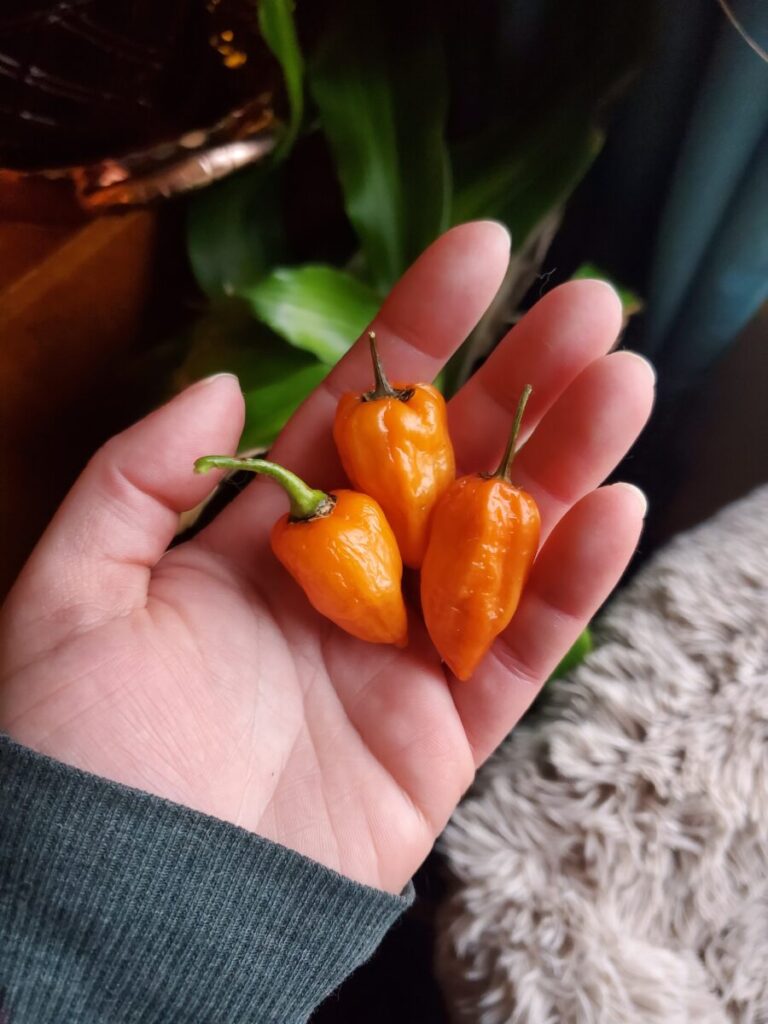
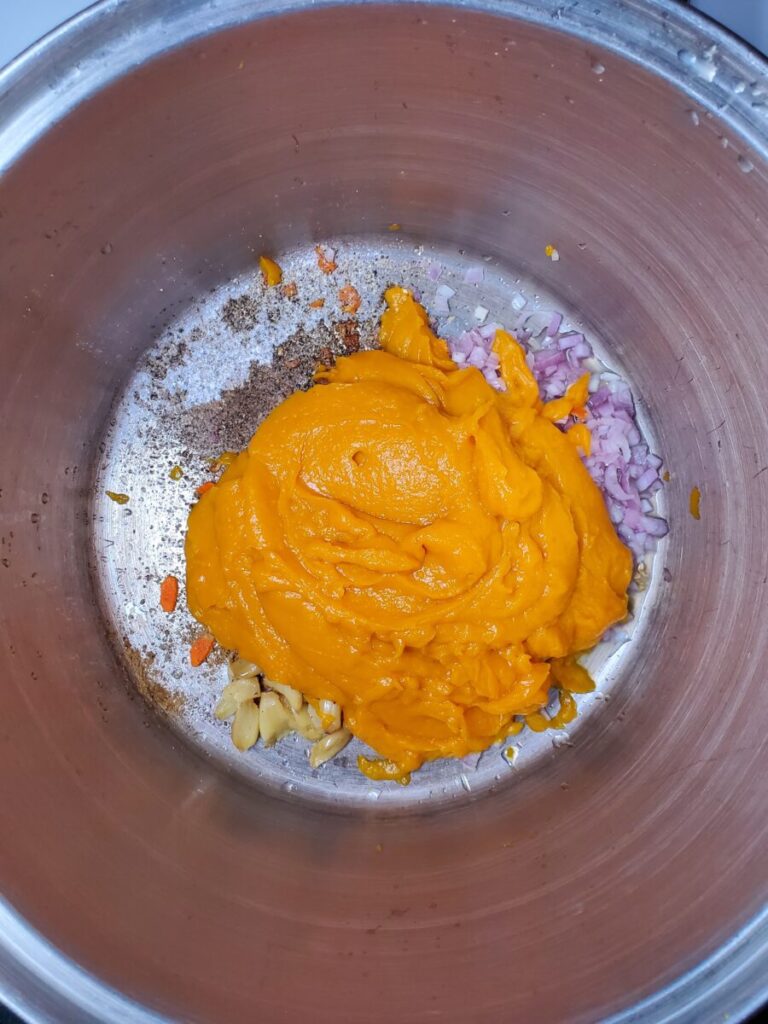
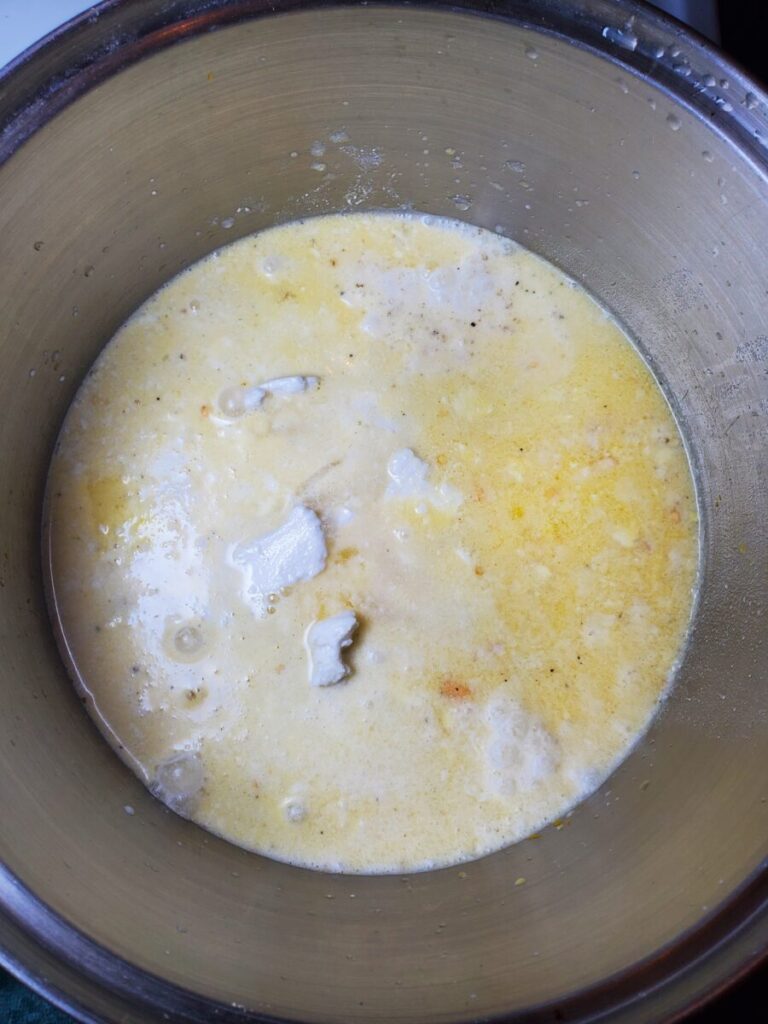


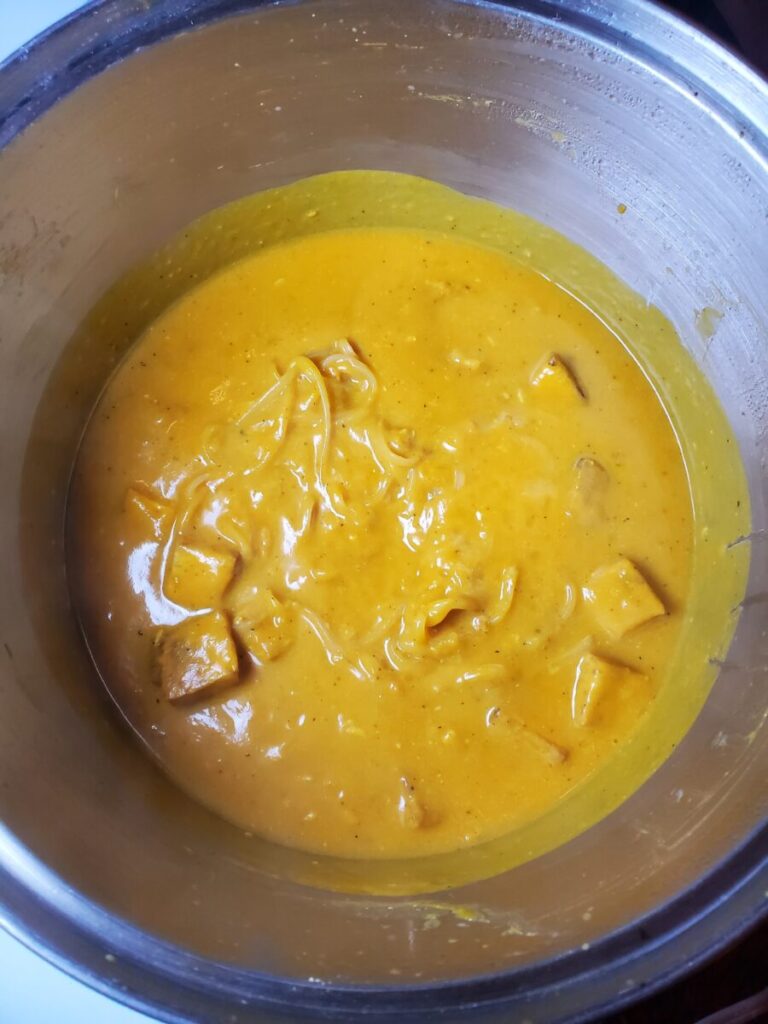
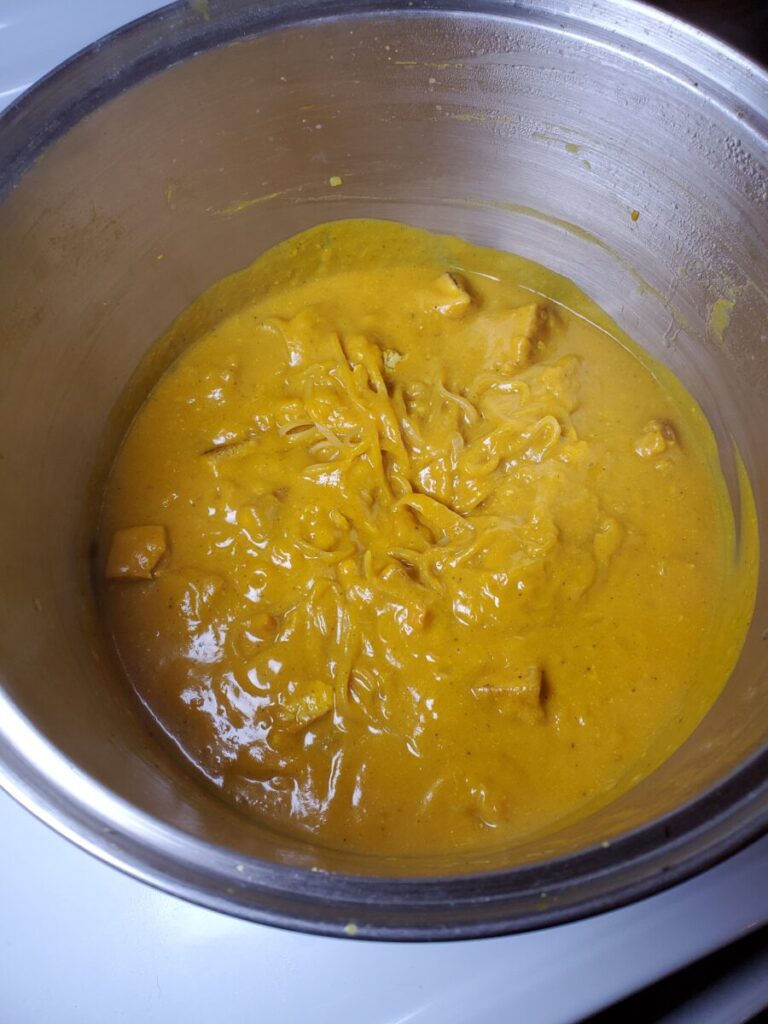
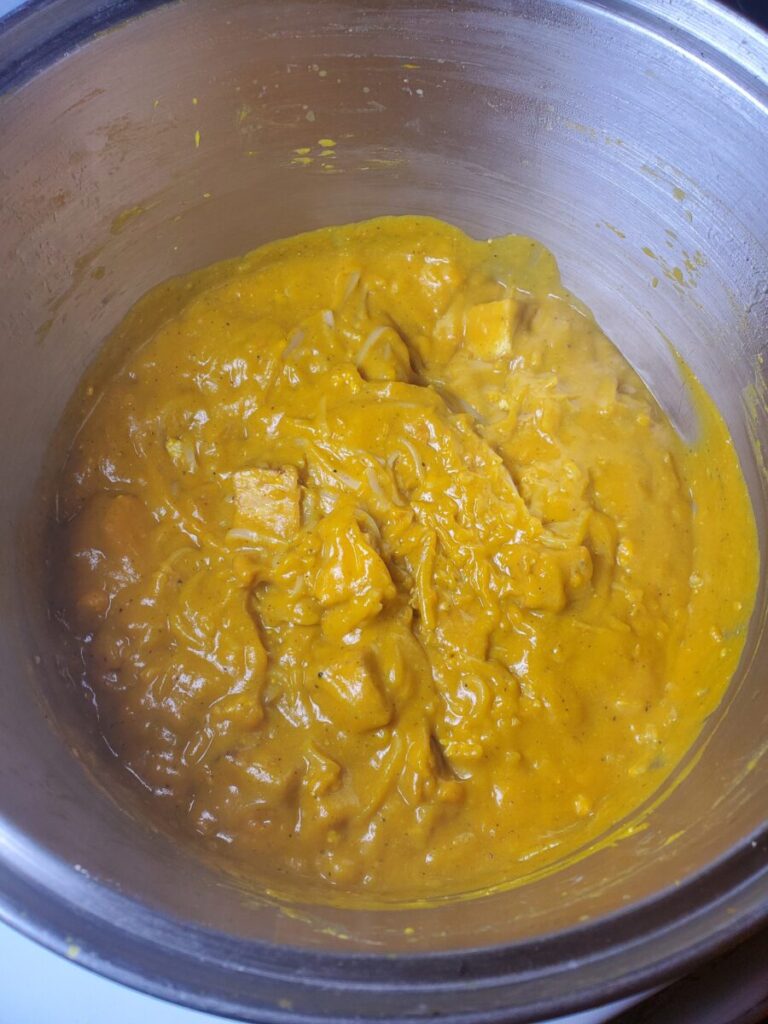
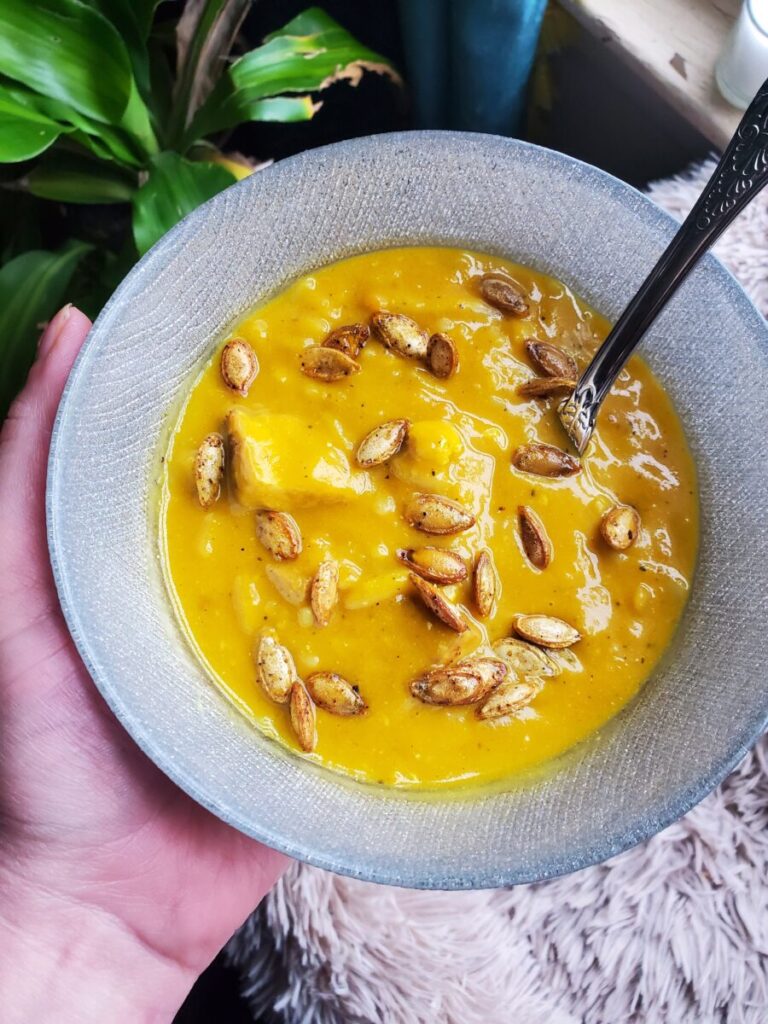

Variations of Calabaza Curry
I am a huge fan of curry. During the winter months when all you need is something warm and spicy slow cooking over the stove for hours? I am all for it! Curries are also a great way to play with flavors. When the ingredients simmer together for that long, it makes for incredibly rich flavor profiles. And is a fun way to mix and match seemingly disparate ingredients.

Curry w/ Calabaza, Tofu, & Habaneros
Equipment
- Large Pot
- Skillet
- Stovetop
- Paper Towels
Ingredients
- 2 c. calabaza roasted & puréed
- 6 cloves roasted garlic (or 3 cloves unroasted garlic)
- 1 tsp. turmeric minced
- 1/2 shallot minced
- 3 habaneros minced
- 1 lime juiced
- 1 tsp. coriander
- dash salt
- dash pepper
- 2 cans coconut cream
- ~4 cans water
- 16 oz. tofu
- 1-2 tbsp. high heat oil
- 4 oz. brown rice noodles (~1/2 package)
- handfull bean sprouts
- handfull calabaza seeds roasted
Instructions
Prepare Ingredients
- I used Roasted Calabaza Squash in this recipe. This takes a couple of hours and requires a calabaza (or other squash or pumpkin of choice) as well as aluminum foil and a baking dish.
- I also used Roasted Garlic. You can easily substitute 3 cloves of unroasted garlic. Otherwise, this recipe simply calls for garlic and oil, a garlic roaster or aluminum foil, and takes about an hour.
- Meanwhile, mince the shallots and habaneros and juice a lime.If you're using roasted garlic, you don't have to dice them. They will largely disintegrate during the cooking process. If you're using unroasted garlic, though, definitely mince at this point!
Simmer Curry
- Add calabaza purée, garlic, shallots, habaneros, lime juice, coriander, salt, pepper, coconut cream, and water to a large pot.
- Bring to a boil and then reduce to a simmer. On my stove, this is about a 2-4 setting. Although different stoves will vary in what a simmer looks like.
- Simmer for at least 2 hours. You want the liquid to reduce in half. If it’s reducing too quickly, add water and turn down the temperature. If it isn’t reducing fast enough, bring to a boil again and reduce to a slightly higher temperature.The longer that you cook, the more the flavors will permeate the ingredients, so simmering at a lower temperature for longer is always an option. I’ll sometimes lower the temperature to a very light simmer and pretty much leave it be for 6-8 hours.You never want to leave a pot on the stove unattended, but this is the kind of dish that you can kind of set up and let do its thing. You may need to turn the temperature down periodically to adjust for too rapid a simmer to keep it from boiling as the liquid evaporates. But, other than that, this is a pretty hands off dish!
Fry the Tofu
- After the curry has reduced about in half, you're going to want to add the tofu so that it can absorb the flavors. You can either put them in as is to reduce the oil in the curry or crisp the edges to help the tofu keep its shape. For this recipe, I lightly fried the tofu.
- While the curry is simmering, drain the water out of the tofu and cut into cubes.
- Wrap in paper towels to absorb the moisture.It's important to absorb as much water out of the tofu as you can. Oil is less dense than water, so the molecules repel one another. With cold ingredients, this causes separation. When you're frying at high temperatures, though, this can cause boiling hot oil to spray back at you.
- Meanwhile, preheat 1-2 tablespoons of oil in a cast iron skillet over medium-high heat.
- When the skillet has preheated and the majority of the water has absorbed into the paper towels, carefully add the tofu to the skillet. Fry until golden brown. This should take about 2-4 minutes. Rotate until all sides are evenly fried.
- Remove from heat and wrap again in paper towels to absorb the excess oil.
- Add the tofu to the curry and simmer for another hour or two.
Cook Rice Noodles
- After simmering the curry for at least 4 hours and the curry is just about simmered down to your liking, add the rice noodles.
- The exact cooking time will vary by brand, but cook to the manufacturer's recommendation.For my brand and noodles, this typically means adding the noodles and simmering for about 20 minutes. Most brands specify boiling, but a slow simmer in the curry works just as well! Just cook until tender. Brown rice noodles tend to have to cook a little bit longer, but will reach a similar consistency eventually.
- Serve either immediately or the next day.Curry will continue to the absorb the spices the more time passes. It’s one of those dishes that I like to make ahead of time because it often tastes better after the flavors have had time to set overnight.
Tips, Tricks, & Notes
- To make the curry spicier, put more hot peppers when you cook the squash and lentils. Peppers added in the beginning stage will have a slower, more robust flavor that permeates through the dish. Peppers added towards the end of the cooking process will have more of a kick in the teeth, mouth burn.
- If the curry absorb too much moisture, you may need to add more water. This is to taste. I tend to like a thicker curry with larger chunks, much like a thick stew. If you’re in the other camp that likes a more liquid curry, don’t hesitate to add more water. If you’re unsure, taste periodically and adjust to what you like. You can always add more water, even after you’re done cooking entirely, to lighten it up. The curry will thicken more as it cools and overnight.
- Do you need to sauté the peppers? A lot of curry recipes want you to sauté or otherwise cook vegetables beforehand. The first direction is typically, “sauté onions and peppers in oil on the stove.” I tend not to do this because it tends to mean adding oil to the curry. Since you’re simmering down for several hours, the natural oils in the vegetables that you use will separate. This will create a film of oil on top of the curry. Some people like this. It can also be an indicator of how spicy a curry is sometimes because the more peppers that you use, the more oils will naturally leach out of them.
- I don’t tend to find oily curry appetizing, though! So, I try to minimize the amount of added oil is in the recipe. If you’ve ever had a soup or sauce that’s separated, you know what I’m talking about. The oil will separate and settle on the top because it’s less dense than water. It will be obvious if it’s a problem.
- If you do end up with too much oil, add an ice cube or a frozen metal ladle to draw out the oil. Then, just spoon it out until you have removed enough oil. Alternatively, if you refrigerate the curry, the oil will rise to the surface. This will create a semi-solid chunk on top and you can spoon it out. If there’s a lot of oil and it has solidified enough, you can sometimes just pick up the layer with your fingers and remove it this way.
- For a more in-depth article on preparing tofu, check out my article on The Fundamentals of Fried Tofu. High heat oil and a precise cooking temperature are important to keep the tofu from drying out or burning.
-
I used Fresh Turmeric in this recipe. You can easily substitute dried turmeric, but there is something particularly refreshing about fresh turmeric. And, if you can find it, mincing it and preserving in olive oil is the key to longevity.
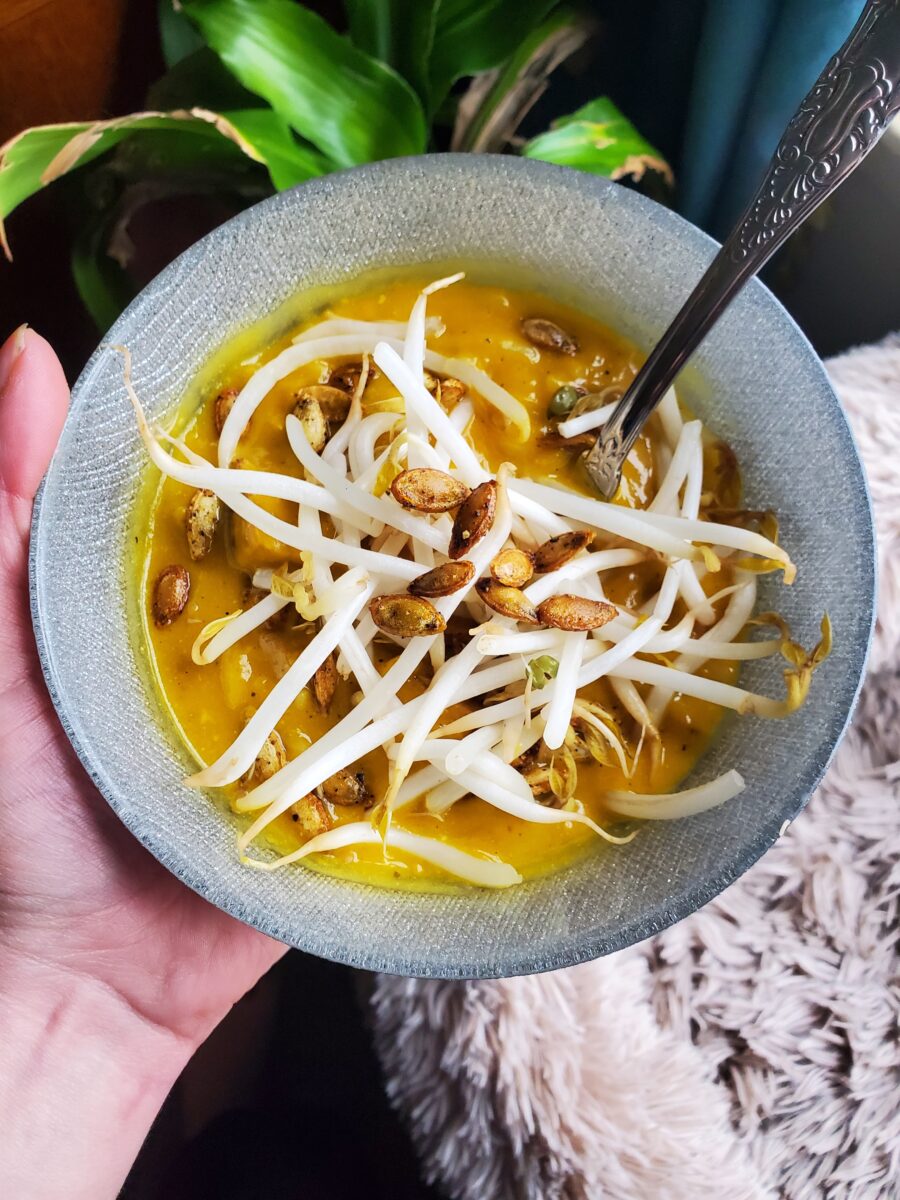
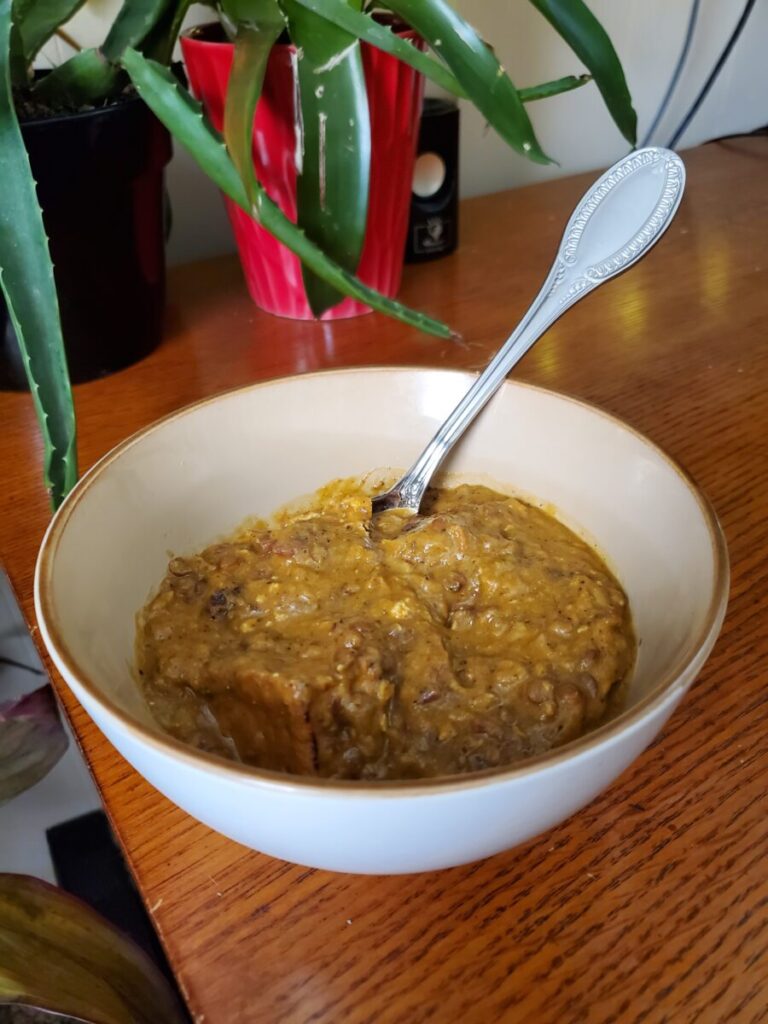
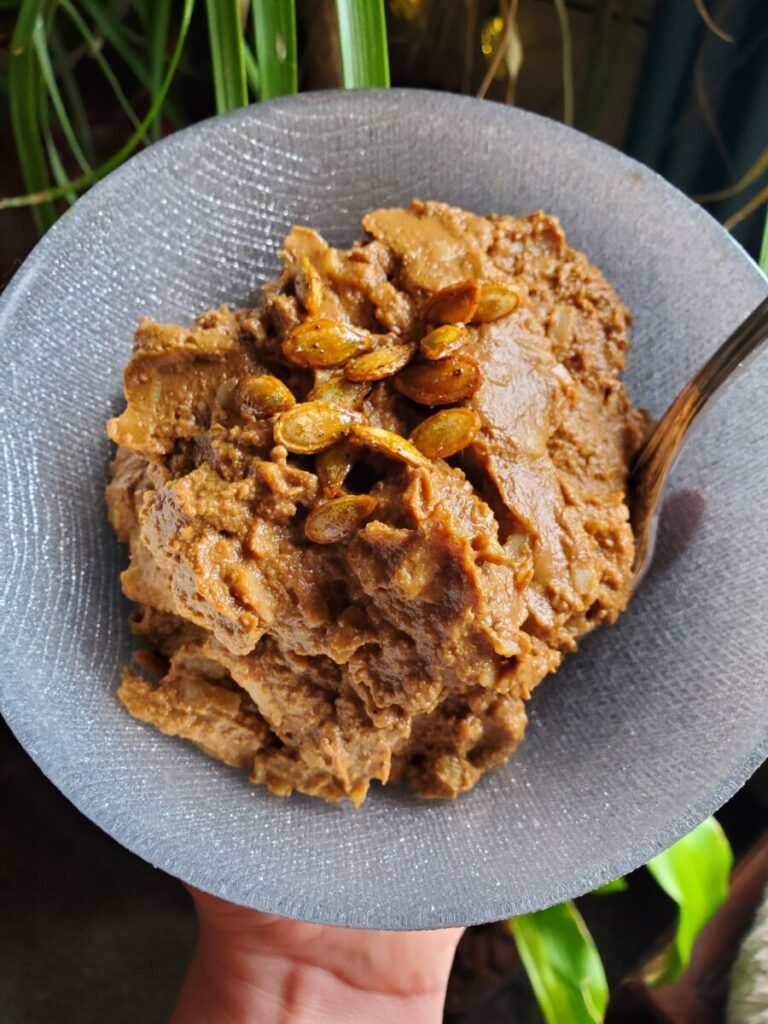


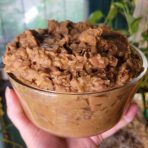

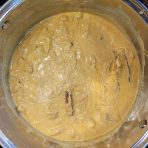
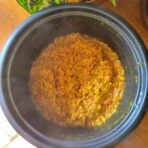

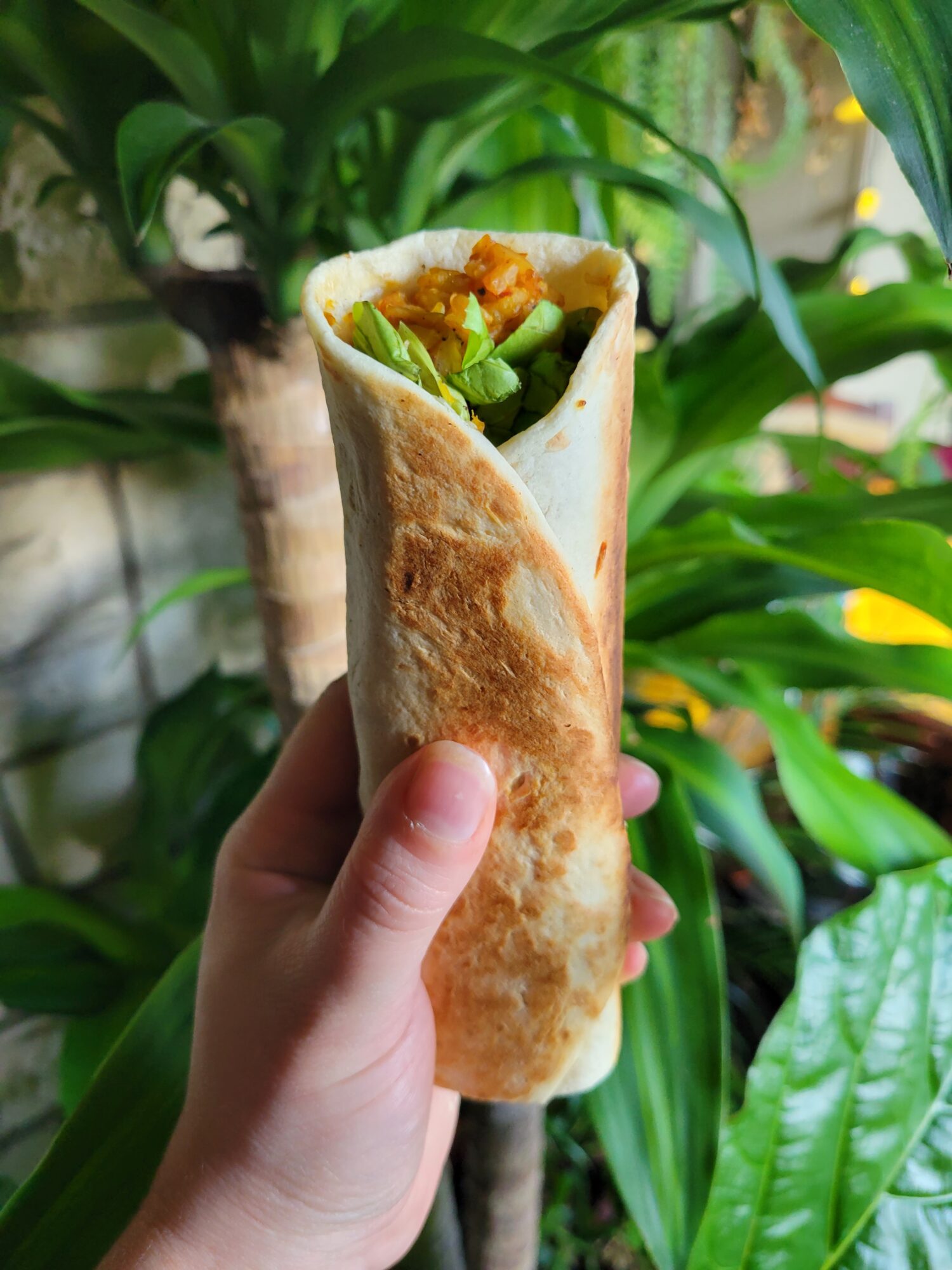

Leave a Reply